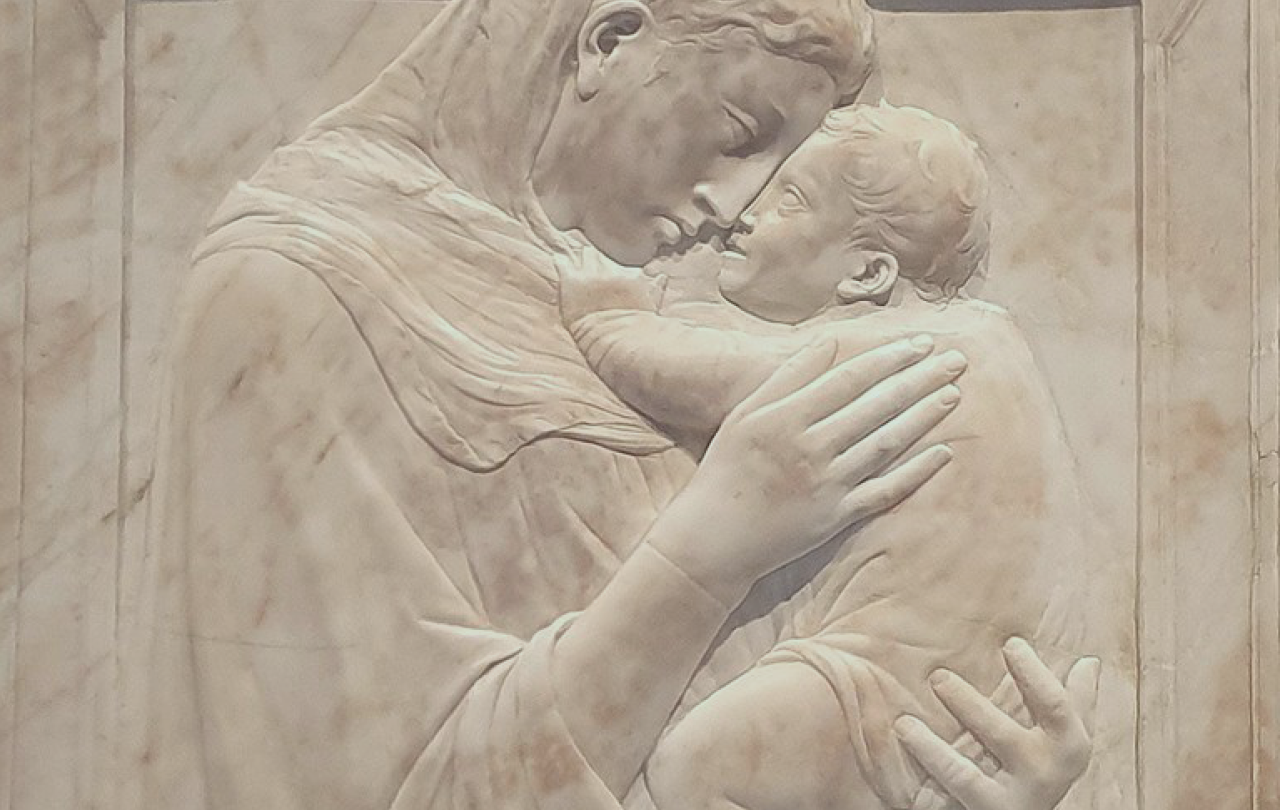
As the weather turns and trees take on their sheen of green, with the seasonal change comes the major spring exhibitions in the nation’s museums. Running from 11 February – 11 June 2023, the Victoria & Albert Museum are hosting a significant exhibition of the work by the Renaissance master, Donatello. Donatello: Sculpting the Renaissance traces the sculptor’s life and career, introducing us to his artistic collaborators as well as tracing his legacy within Western art history. A summary of the exhibition has been well described elsewhere and the curators do a fine job of providing context for the viewer that allows one to understand the significance of Donatello’s work. Instead, in this article, I want to try and capture what is felt in what is seen for I think Donatello, in his subject matter and style, is able to hold in tension the paradox of joy and suffering. This paradox is an all-too-common human experience, something that has been explored as Christians journeyed together through Holy Week. While Christian theology has a way of helping make sense of why this paradox exists, art has a way of helping us all to process our lived experience of it.
Through sculpture in different forms, Donatello invites our bodies, through movement and posture, to engage with what or who is presented.
As the exhibition shows, Donatello is famous for being the first in the Renaissance to sculpt a free-standing form. Sculpture, especially free-standing sculpture, requires something of the viewer. In order to see it properly, you have to position yourself in relation to the work and move around it. And while Donatello was clearly a master at this artform, what he invented was rilievo schiacciato, meaning ‘squashed relief’. The stone or bronze is carved with only a few millimetres of depth. In a way, it is like ‘painting’ with stone or bronze, and in doing so, the two-dimensional and three-dimensional are fused. As you move around it, light refracts off the medium, thus highlighting different aspects of the work and changing what you see. Put another way, through sculpture in different forms, Donatello invites our bodies, through movement and posture, to engage with what or who is presented. This embodied connection can start to cultivate empathy as we place ourselves and identify with who or what we see.
The touch of human to human is so real at times that the bronze or stone seems to give way to soft flesh.
Donatello’s work also evokes empathy in the way that he sculpts the human form. In his work, the touch of human to human is so real at times that the bronze or stone seems to give way to soft flesh. This is at its most poignant in the multiple Virgin and Child sculptures displayed throughout the exhibition. And it is here, particularly in the Virgin and Child (Pazzi Madonna), where the paradox of joy and suffering is presented most evocatively.
It is not uncommon to see artistic renderings of the Virgin and Child where distance is held between the two forms. Sometimes, the child looks out at the viewer, away from his mother, inviting devotion through his gaze. In other depictions, the Virgin adopts a posture of worship before her son. The reason for this is theological: the visual divide was a way to bring to the fore the divinity of the human Jesus. However, what we find in the Donatello renderings is something different.
In the Pazzi Madonna, using his trademark schiacciato, Donatello presents a sculpture of emotional urgency. Instead of distance between Virgin and Child, we see a mother who has her face pressed up against her son’s. While the child has a look of contentment and the beginnings of a smile, the mother looks at her child with intensity, marked by sadness. While a worshipping Virgin indicated her awareness of her Son’s glorification through his crucifixion and resurrection, this face tells of a different knowing. The beginning of this child’s life is already marked by the end. And while the end will bring salvation to the world, the anticipation of the end brings suffering for the mother. Mary knows that her son, the one she has borne and is called to nurture into adulthood, will suffer on her behalf and on behalf of the whole world. It will be this suffering that she cannot stop or protect him from. And while the work tells of joy in the intimacy and tenderness between mother and child, this joy is held in tension with the suffering that will come from their respective acts of obedience. The worst that a mother could imagine for her child must happen because in that worst moment is, paradoxically, the hope for the world. Where their faces meet in this sculpture, joy and suffering are visibly held together.
What does it mean for us to press our suffering faces against the face of Jesus? As we look into his eyes of joy, how does that transform the way we see the world and our circumstances? The Christian story is one of hope. In the end, all things will be made right and there will be an end to all suffering and tears. And while we live with and through real pain, as we see with Donatello, we see that this human paradox can be held now for its resolution will come.





